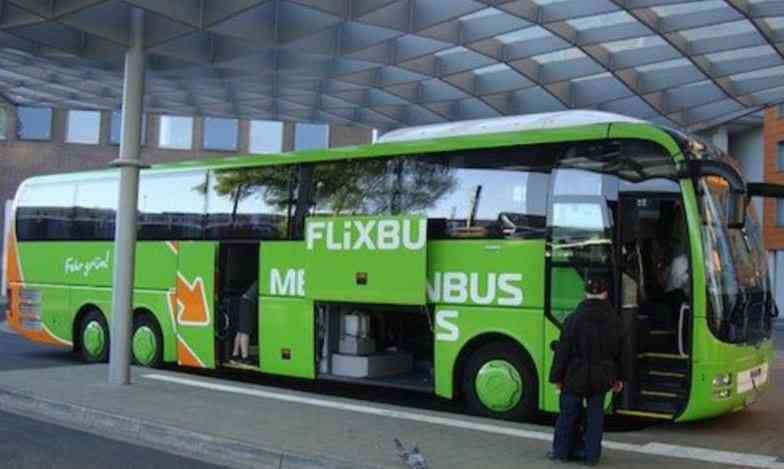
A journey across Western Germany. (Courtesy)
To get to Aurich, which is in Lower Saxony from Berlin, you can either take a train- preferably a Deutsche Bahn, a long-distance bus like Flixbus or you can fly. Few fly because it costs twice the train ticket and thrice the bus’s ticket price and even then, the farthest you would fly is Bremen then you would have to change to train or bus from Bremen to Aurich. Berlin to Aurich by Deutsche Bahn will take you about six hours while by Flixbus, which is what I opt for (of course I took a bus. As someone who comes from Western part of Kenya, I take the bus every December, faithfully, like every Westerner to my rural home) takes almost eight hours- two hours longer than if you were to take the trains.
Because I was going by bus, it meant I was using the Berlin-Hannover-Bremen-Leer-Aurich route instead of the Berlin-Hamburg-Bremen-Leer-Aurich one that I would have used if I took a train. The buses prefer the Hannover route because it is shorter. The bus left Alexander Platz- the famous Alexander Platz at 10.30am. The ‘Alexander Platz’ that was named for Russian Tzar Alexander I, and described by Alfred Doeblin his book- a masterpiece itself- ‘Alexanderplatz Berlin.’ The Alexander Platz of the 1989 demonstrations- famous because it accelerated the fall of the Berlin Wall and because of the number of people who participated (estimated to have beeen between half a million to a million people). Now, a touristic beauty with its TV Tower, World Time Clock and the Fountain of Friendships between People.
As you leave Berlin to take the highway, the city landscape changes. It moves from squeezed business stores and residential apartments to more apartments (a bit spaced out) outside the city centre, to large red-bricked farm houses, to warehouses and factory-like structures which stretch for a good long distance before you start to see the land start to get emptier and emptier. Eventually, it graduates to thin, tidy forests or just stretches of land with grass. Because it had snowed, the grass was covered in an thick, endless white web. We arrived in Hannover four hours later. I found Hannover to be plain and cultureless compared to – not Berlin, for the sake of fairness but- Bremen.
Although it had comparatively better weather (again, if Bremen was the standard), it was also engulfed in a kind of stuffy, bourgeois dullness. There were no recognisable landmarks or traditions. It took me a while to recognise that we had arrived in Hannover. Once a charm itself before the war, the city had lost most of its allure to the World War II bombs, and then whatever was left was lost to the bulldozers that came post the war to hurriedly pave way for modernity. The result of that was that it was plainly unattractive, boring and very provincial. Even the people walk mechanically, like they are aware of the charmless responsibility that had been bestowed upon them- and everyone, as far as I could see, performed wonderfully under that expectation.
On the other hand, Bremen had huge market squares, museums, bars and old cultural streets. A city so warm and enchanting, I could feel the charm hovering about, beckoning at my window as I gazed out at the city. It was as though the life of the city had congregated outside my window in the antique buildings to greet me. I found the hoariness of Bremen quite charming, the way you would find an old, abandoned cemetery. In Oldenburg, we stopped to pick more people (the bus’s final destination was Amsterdam). Most of the passengers, understandably, were foreigners. Most Germans prefer trains, and there often is something deeply unsettling about a German in a long-distance bus.
Being a students’ town, it displayed a student’s like demeanour: endless food joints and cafeterias, several parking for bicycles, street bars and a general modern (in a light-hearted way) architectural display. By the time we got to Leer at around five in the evening, it was already dark outside. Because of winter, darkness falls around half past four and the sun does not rise till around eight in the morning.
This is the closest to Aurich this particular bus could go. From Leer, it proceeded to cross the border (with Netherlands) then to Groningen and finally to Amsterdam (another five-six hours). I got off at Leer, then took an inter-town bus (these ones are smaller and far less comfortable) to Aurich. The ride took an hour. Although far smaller (it has a population of about 40,000) than any of the cities or towns afore-mentioned, being the capital of the District of Aurich, Aurich (the town) has surprisingly quite a number of amenities converged around the town center. It is cozy and carefree (although this would be debatable considering it is in the North where the locals are stereotypically considered more reserved). This small, cozy town has, and will be my home for the next couple of months – where I am volunteering as a part of a project called Tandem with Kulturweit and German UNESCO.
Related Topics